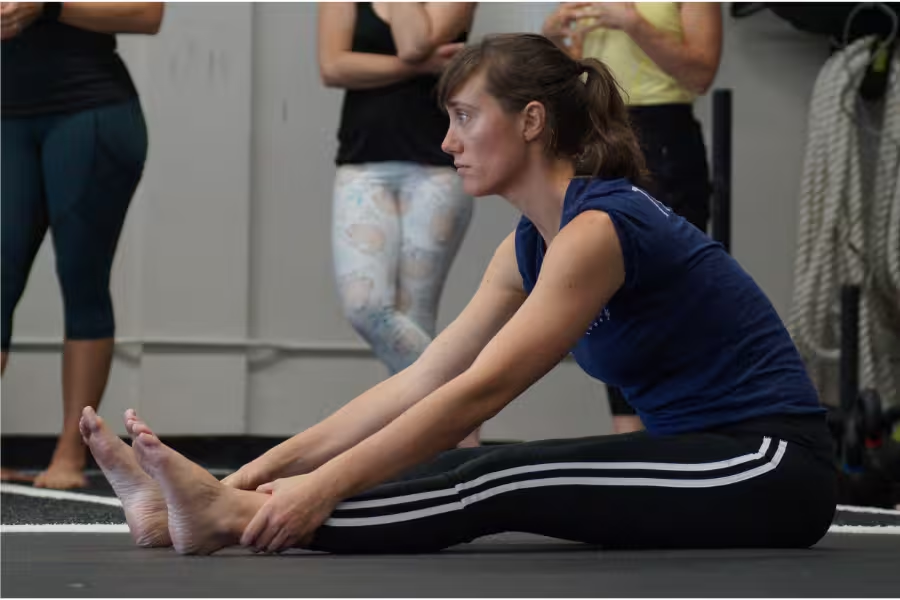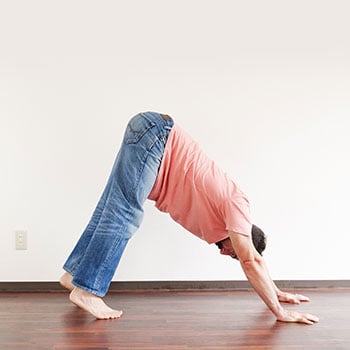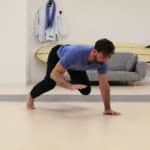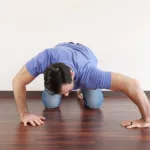A warm-up is an important part of any training session… everyone knows that.
 But let’s be honest—most people either rush through it or waste time on a long, unfocused routine before getting to “the real workout.”
But let’s be honest—most people either rush through it or waste time on a long, unfocused routine before getting to “the real workout.”
Both approaches miss the point.
Your warm-up isn’t just a box to check—it’s a critical part of how well you train. Done right, it prepares your body, sharpens your focus, and improves your performance.
That’s why we prefer to call it preparation —because that’s what it should actually do.
In this article, we’ll break down:
✅ What makes a good prep session (and why most warm-ups fail)
✅ 3 key features of a smart, effective routine
✅ A sample prep sequence you can use today
Scroll down for the explanation and video, but first…
🎙️ Podcast: Warm-Ups vs Prep
Here’s Ryan and Andy breaking down the difference between old-school warm-ups and well-designed training prep. Most of these points are covered in the text below, the it’s worth listening, even if only for the rant factor.
See all our podcast episodes here
What it Really Means to Prepare Your Body
If you look around on the internets, you’ll see one of two approaches to the warm-up:
 1️⃣ The Bare Minimum – A few quick, random movements just to say you did something.
1️⃣ The Bare Minimum – A few quick, random movements just to say you did something.
2️⃣ The Overkill Routine – A long, complex sequence that takes longer than your actual workout.
Neither of these is specific to your training goals, which means they don’t actually prepare you for what you’re about to do.
A good prep routine is targeted—it gets your body and mind ready for the session ahead.
For example:
- If you’re doing a lower body focused session, your prep should emphasize hip and leg mobility.
- If you’re training handstands, your wrists and shoulders need focused attention.
- If you’re going to be doing some intensive cardio, it’s best to get your body temperature up and loosen up your hips and back for the hard work ahead.
Random exercises won’t cut it. A focused approach will make your actual training smoother, stronger, and safer.
For instance, in our Elements program, when we are going to be working on a lot of squat-related exercises, the prep routine includes a squat warm-up. That way, your body is well-prepared for what it needs to do that day.
It’s not that a dozen different exercises for your warm-up is bad–you’ll still get the benefits of increased body temperature, heart rate, and all that from those movements–but it’s not the most efficient use of your time.
3 Key Features of an Effective Prep Routine
A great prep session isn’t about doing more—it’s about doing the right things.
Here are three features that make a warm-up actually useful:
1. Focuses on Areas That Need Work

Your biggest movement restrictions should get top priority.
Instead of mindlessly running through generic drills, target the areas that hold you back.
If your shoulders are tight, include specific mobility work.
If your hips feel stiff, address that before your session.
If your wrists struggle under load, prep them properly.
Spending a few focused minutes on your biggest sticking points will give you the most bang for your buck.
👉 Not sure what to work on? Here are some resources for specific areas:
✅ Neck | Shoulders | Spine | Elbows
✅ Wrists | Hips | Hamstrings | Feet/Ankles
Most of us don’t have time for a long warm-up routine every day. The key is choosing 2-3 areas that need attention and prioritizing those.
2. Prepares You for Today’s Training
 The reason we call this a prep routine is because it should be designed to prepare your body to perform at its very best for the session ahead.
The reason we call this a prep routine is because it should be designed to prepare your body to perform at its very best for the session ahead.
Think about what you’re doing that day and choose exercises that support it.
Doing a lot of hand balancing? Spend time on wrist and shoulder mobility.
Training heavy squats? Work on hip mobility and ankle flexibility.
Focusing on pull-ups? Open up your shoulders and upper back.
Your prep routine should flow seamlessly into your workout, not feel like a separate task.
Your goal? You should feel ready—physically and mentally—to train at your best.
3. Helps You Tune In to Your Body

Your prep time is your check-in time.
Instead of rushing through it mindlessly, use this time to see how your body is actually feeling today.
- Are you stiffer than usual?
- Do you feel strong and ready to push harder?
- Are you feeling off and need to adjust your expectations?
Some days, you’ll realize you need extra mobility work. Other days, you’ll notice you feel loose and ready to go.
This kind of awareness helps you train smarter, not just harder.
We go deeper into this concept in our article on autoregulation,but in short, the best athletes listen to their bodies and adjust as needed.
Sample Training Prep Routine
A perfect prep routine doesn’t exist—it depends on your needs.
But here’s a simple, effective example you can try:
Follow along with this video:
| Exercise | Description |
|---|---|
| Flexed and Rotated Neck with Sidebending | • Keeping your head tucked down towards your chest, go to the furthest point of rotation you can and then sidebend your head (remember the axis of rotation is your nose) as much as you can control. |
| Kneeling Back Flexion to Prone Lying Back Extension | • This is a full spinal movement taking you back and forth from a flexed to an extended position. • Visualize “opening” your back in the kneeling position and then “opening” the front of your body in the lying extended posture. • Go slow and steady and feel where in your back is holding the most tension. |
| Spine Circles | • Starting from hands and knees, trace a circle with your back. • Imagine taking one point in the middle of your back and making as large a circle as you can. • Again, go slow and steady and ferret out the most tight areas of your spine. |
| Kneeling Lunge | • Stride out into a kneeling lunge, where you have a wide enough base with your knees apart to be comfortable moving back and forth. • Make sure to give yourself enough room to move by having your front foot far enough forward so that your knee is just over your foot when you lunge forward. • Keep your upper body tall for balance and proper positioning. |
| Cross Arm Stretch | • Moving back into a kneeling position, bring your arm across your chest perpendicular to your body. • Lean forward and place as much weight as you are comfortable with to stretch the back of your shoulder as you roll onto your arm. |
| Alternating Shoulder Prayer Stretch | • Sit your hips back as far as you can onto your feet and keep your hands outstretched. • From here, alternate bringing your elbow towards the floor. You can rotate your body a bit to make that happen, but make most of the motion happen at the elbow to stretch your shoulders and lats. |
Make Mindful Preparation a Habit
Rushing through a warm-up just to check it off the list is a waste of time.
A targeted, mindful prep routine will:
✅ Help you move and perform better
✅ Reduce your risk of injury
✅ Make your entire training session more effective
This is built into all our programs, but it’s especially core to Elements, our introductory program.
Elements teaches you how to:
- Move better with strength, flexibility, and control
- Understand what your body needs and adjust your training accordingly
- Build a strong foundation that supports every kind of movement
Master the Habit of Mindful Preparation
Each session links prep with practice, play, challenge, and reflection for sustainable progress.






